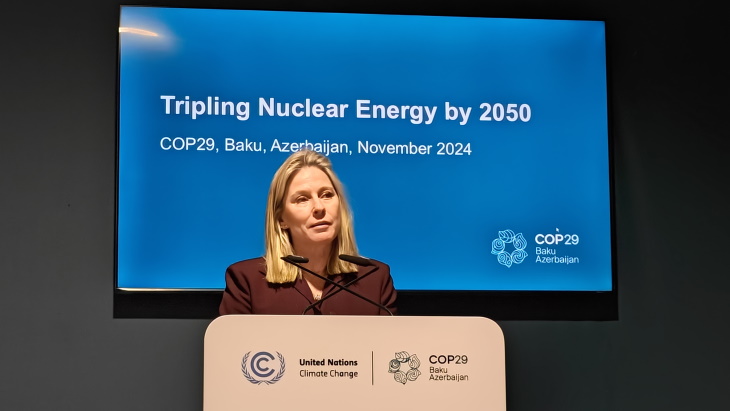Ontario's energy transition
_74x48.jpg) Air quality in Canada's Ontario province has improved dramatically in recent years, simultaneously with the ramping up of nuclear power and the phase-out of coal.
Air quality in Canada's Ontario province has improved dramatically in recent years, simultaneously with the ramping up of nuclear power and the phase-out of coal._615x160.jpg)
_460x120.jpg) |
| Toronto (Image: John Vetterli) |
Air quality in Canada's Ontario province has improved dramatically in recent years, simultaneously with the ramping up of nuclear power and the phase-out of coal.
Ontario is home to a large portion of Canadian industry, the cities of Ottawa and Toronto and some 40% of the country's population of 33.4 million. Data from the Ontario Ministry of the Environment shows a dramatic reduction in the air pollution that in 2005 was affecting these people for at least ten days during the year. The worst-affected places in 2005 had been 14 of 37 Ontario locations with more than 40 smog-warning days. Every location had at least ten smog days.
In 2011, by contrast, the worst-affected place had only eight smog-warning days, while 18 of the 37 locations had no smog warnings at all. Overall, days on which the people were warned about unhealthy levels of smog at one location or another have dropped from 53 in 2005 to just nine in 2011.
Energy transitions
Ontario's approach is in stark contrast to that taken in Germany, which has a commitment to end the use of nuclear power and rely instead on renewable sources. This has seen significant coal capacity being constructed as a 'bridge technology' to a hoped-for renewable future. Japan too is struggling to replace the nuclear power kept offline since the 2011 accident at Fukushima Daiichi. Imports of LNG have leapt and officials recently began fast-tracking planning permission for coal plants. Meanwhile, a report by the International Energy Agency noted unhappily that the UK was the only country that has committed to not build any more unabated coal.
While Ontario has encouraged and facilitated investment in renewables and gas as well as efficiency in power generation and industry, two power sources have played leading roles in the province's transition: coal, because it has been gradually reduced and is set for phase-out; and nuclear, because it has increased to replace that supply.
Ontario has progressed steadily since a policy was announced in 2003 and is set to close its last operating coal-fired power plant next year. The 1140 MWe Lakeview coal plant was closed in 2005, leaving in operation Lambton with 1976 MWe, Nanticoke with 3964 MWe and small units amounting to 517 MWe. Those small units might be converted to burn gas and biofuels while Nanticoke and Lambton are being progressively closed, with final exit from coal planned for 2014.
All the above are owned by Ontario Power Generation, a province-managed utility which was instructed to improve nuclear capacity to replace that supply. Since 2003 it brought back to service two Candu units at Pickering and will also refurbish four reactors at Darlington for 25-30 years more life. The company also continues to move forward with a plan for two new large reactors at Darlington, for which environmental approval and a site preparation permit were granted last year.
Health
Fossil fuels make their presence felt in a population's health, causing a range of respiratory problems. The former head of NASA's Goddard Institute for Space Studies, James Hansen, recently co-authored a paper that conservatively put a figure of 76,000 on the number of lives saved each year through the use of nuclear power instead of a representative mix of coal and gas.
In the same timeframe another Ontario utility, Bruce Power, has brought online four units from a mothballed status at the Bruce A nuclear power plant. Units 3 and 4 came back into operation in 2003 and 2004 and units 1 and 2 followed in 2012.
Overall in Ontario nuclear capacity has increased by 4134 MWe since 2003, while coal has decreased by 4368 MWe. Renewable capacity grew by 2560 MWe and gas by 5672 MWe, according to the Independent Electricity System Operator (IESO).
In terms of delivered power Ontario was 85% carbon-free on 29 April, said IESO data. Nuclear provided 58% of electricity, with hydro at 26%, gas at 13% and wind at about 2%. This results in a carbon dioxide intensity of about 72 grams per kilowatt-hour.
Researched and written
by World Nuclear News

_99697.jpg)








_88592.jpg)

